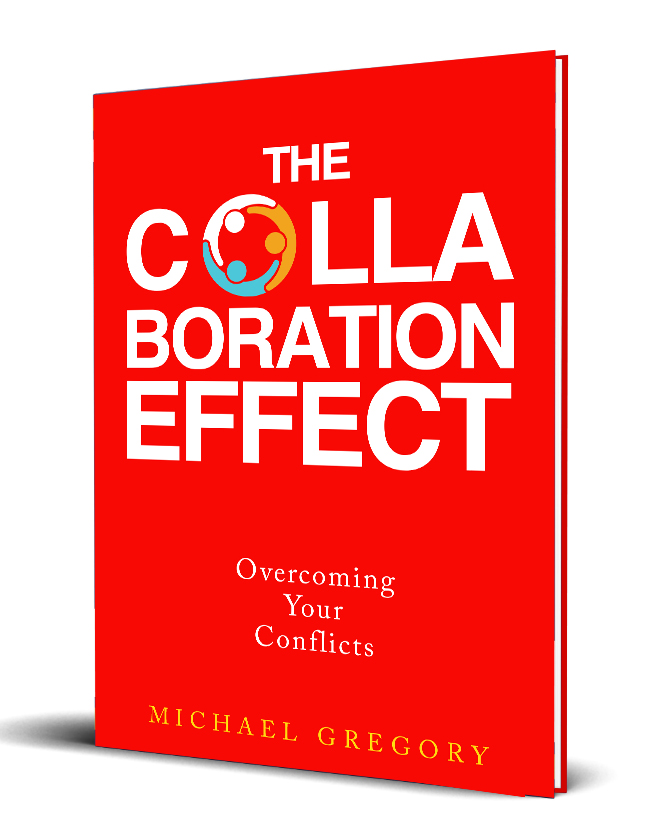
As a promoter of collaboration, a mediator, a conflict resolution specialist, and a person that teaches ethics and negotiations, I did not initially appreciate the title of The Dark Side of Collaboration offered by Scientific America. However, the subtitle of “People working together often scheme to put profits ahead of telling the truth. New research points out ways to stop this behavior” gave me hope. I found this article extremely helpful and enlightening. This commentary that follows shares some of the highlights of that article and offers some additional observations.
Ethics and collaboration
It turns out from the research of the 34 articles researched that unethical behavior is common in collaboration. However, there are limits on how far people will go. This can be very problematic. Groups develop a mindset to reach the goal. If this involves lying, that can be deemed acceptable. If there was a chance for greater profit or similar motive associated with winning, participants were not against falsifying the truth. If there were downsides to lying such as a charity would receive less if it were found out that participants lied this cut down on lying. They also found that gender and age mattered.
Interestingly with older participants and with women lying took place less.
Past research shows that when women lie, they have been penalized more.
Another observation was that dishonest behavior was indeed contagious. Collaborative dishonesty also escalated with time. These findings suggested as soon as any dishonesty is detected it should be addressed. Not addressing dishonesty early means that others will see no negative repercussions for dishonesty and determine that the corporate culture cultivated this kind of behavior. Here are three examples:
- Think of Vietnam and the military’s need for body counts of enemy killed each week. It is estimated that 61% of American commanders considered body counts to be grossly exaggerated[i].
- Consider how Volkswagen engineers deliberately falsified emissions reports to meet government standards so that they could meet timelines and quality standards when they knew they were wrong.[ii]
- Wells Fargo opened millions of accounts without customer consent and settled for a $3 billion fine. Employees needed to open so many accounts to meet standards, so they started opening fictious accounts to meet standards with customer information[iii].
These are just the tip of the iceberg of examples regarding collaborative dishonesty. So, the question arises, how do you cultivate honesty?
How to encourage honesty
It is possible up front to develop a zero tolerance for dishonesty. That is integrity and honesty are true values of our organization and any fabrications or dishonest behavior will not be tolerated. Even small acts of deceit would not be tolerated. As examples:
- Here is the policy at Save the Children
- Here is the policy at a call center
- Here is the policy with computer science course work
Another opportunity is with whistle blowers. In this instance whistle blowers are encouraged. Whistle blowers will be forgiven for wrong doings on their part.
A more common management technique is to
request employees to bring to their managers attention any possible or probably administrative or technical issue that they believe their manager should know about.
This policy also asks employees to report any mistakes as soon as the employee is aware of any concerns. This avoids compounding issues from relatively minor simple mistakes or miss communications right away. This allows management to work with employees to resolve issues as soon as possible.
Nipping collaborative dishonesty in the bud at the very beginning is the best way to prevent the cancer from spreading.
What about harm?
As indicated from the research above collaborative dishonesty was reduced when harm was identified from lies. Realizing that others could be or would be harmed helps to reduce collaborative dishonesty. Educating others to the ramifications helps to reduce collaborative dishonesty. With the three examples above:
- Vietnam body counts – the military lying to the American public undermined confidence of the American people in the military and caused extremely negative repercussions by civilians against military veterans during the later stages of and after the Vietnam war.
- Volkswagen diesel emission tests – undermined confidence in customers view of Volkswagen, caused additional pollution and deaths as a result of the excess emissions being released into the environment.
- Wells Fargo fake accounts – undermined the public’s view of Wells Fargo as a banking entity and had negative impacts on individuals whose records were taken without consent. Privacy rights were violated by customers trusting in the integrity of the bank.
Given these ideas what can you do now?
Here are five ideas for your consideration.
- Assuming your firm has a mission, vision, and values statement meet with your group and discuss these with your team. What do these mean to you? Have a frank and open discussion. See where this leads. Promote ethical collaboration
- Learn your boss’s communication style and approach your boss the way he or she wants to be approached. Identify preferences for in person, email, text and when and how to communicate.
- Get to the point. Time is precious. Yes, ask how he or she is doing. Is this a good time for an interruption? If so, take the time ahead of time to concisely identify and state your concern. Have some solutions in mind from your perspective.
- Remember to stay within the chain of command. Do not undermine your boss unless your boss is part of the problem. If that is the case reach out to a mentor and ask what might be the best way forward.
- Be a problem solver. See if you can produce a way to overcome the barrier. Be proactive and show that you have the best interest of the organization regarding the issue. Your ideas may not be accepted, but if you come with a solution ahead of time, this will increase the probability of consideration.
Consider these ideas to address dishonest collaboration. Let me know how it goes. What are your ideas? Please share them with me.
About the author
Mike Gregory is a professional speaker, an author, and a mediator. You may contact Mike directly at mg@mikegreg.com and at (651) 633-5311. Mike has written 12 books (and co-authored two others) including his latest book, The Collaboration Effect: Overcoming Your Conflicts, and The Servant Manager, Business Valuations and the IRS, and Peaceful Resolutions that you may find helpful. [Michael Gregory, ASA, CVA, MBA, Qualified Mediator with the Minnesota Supreme Court]

